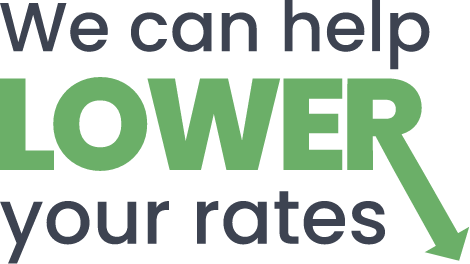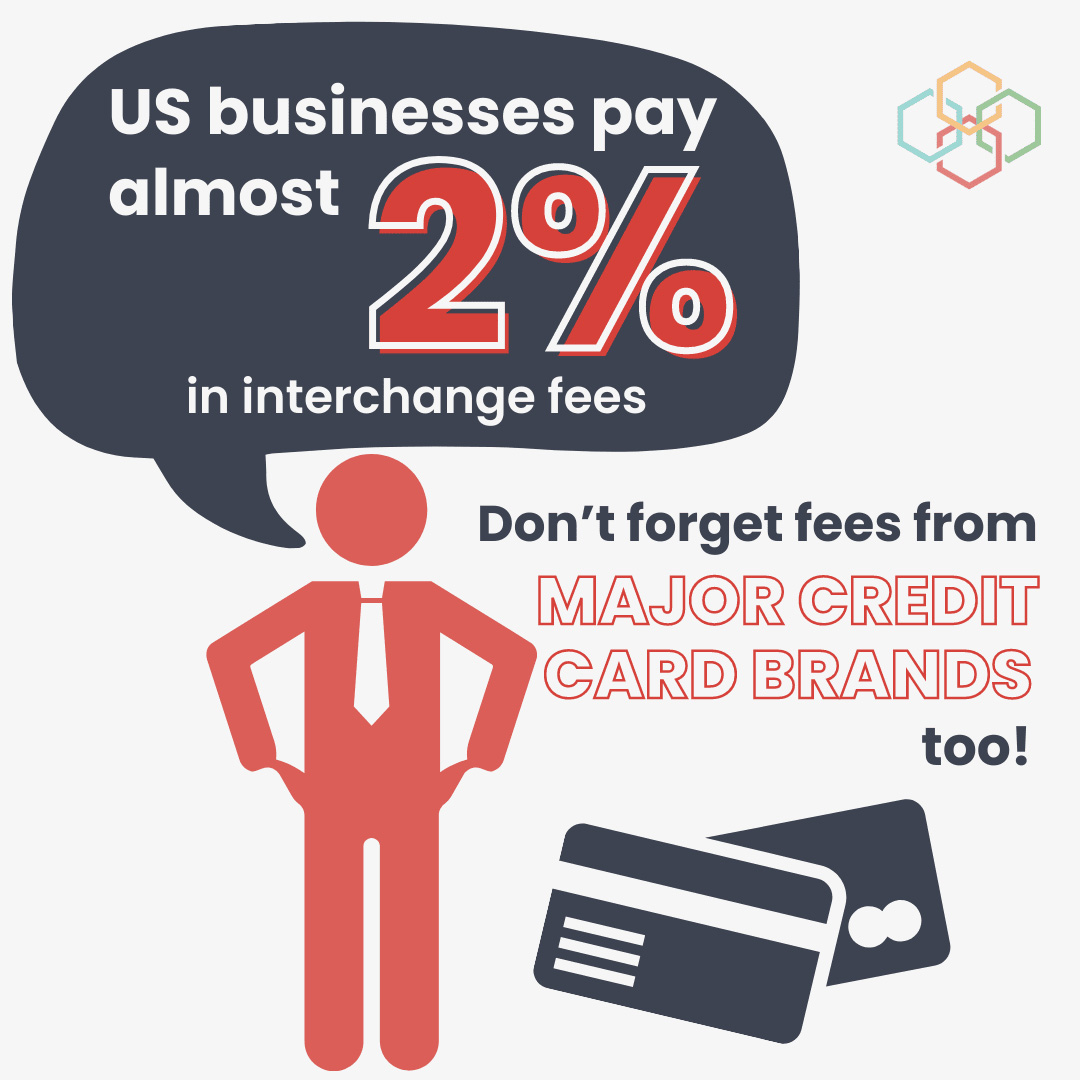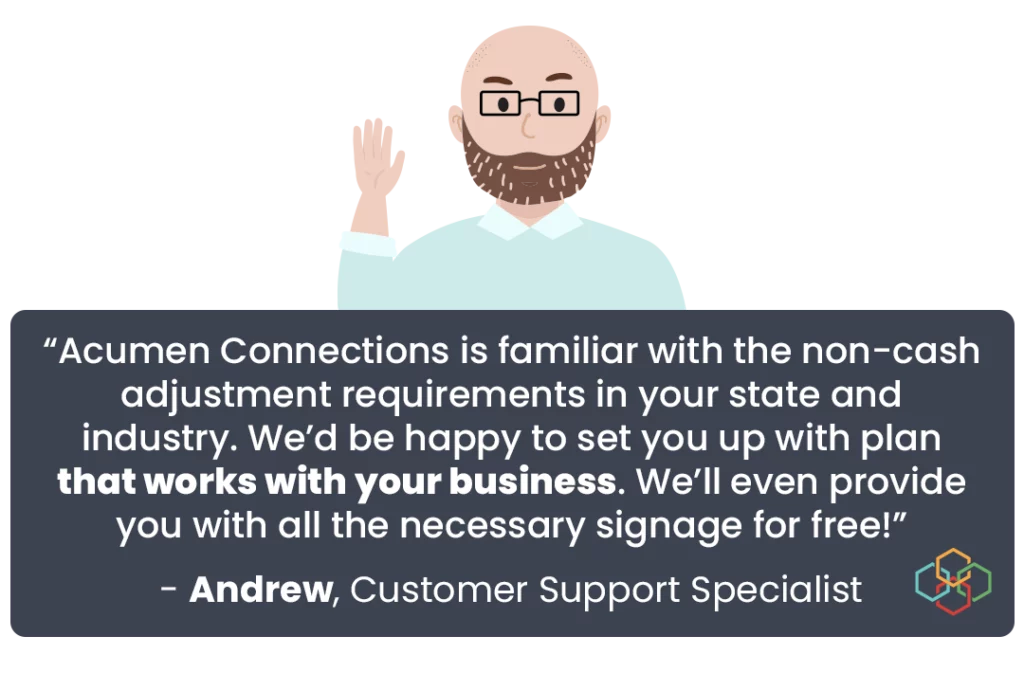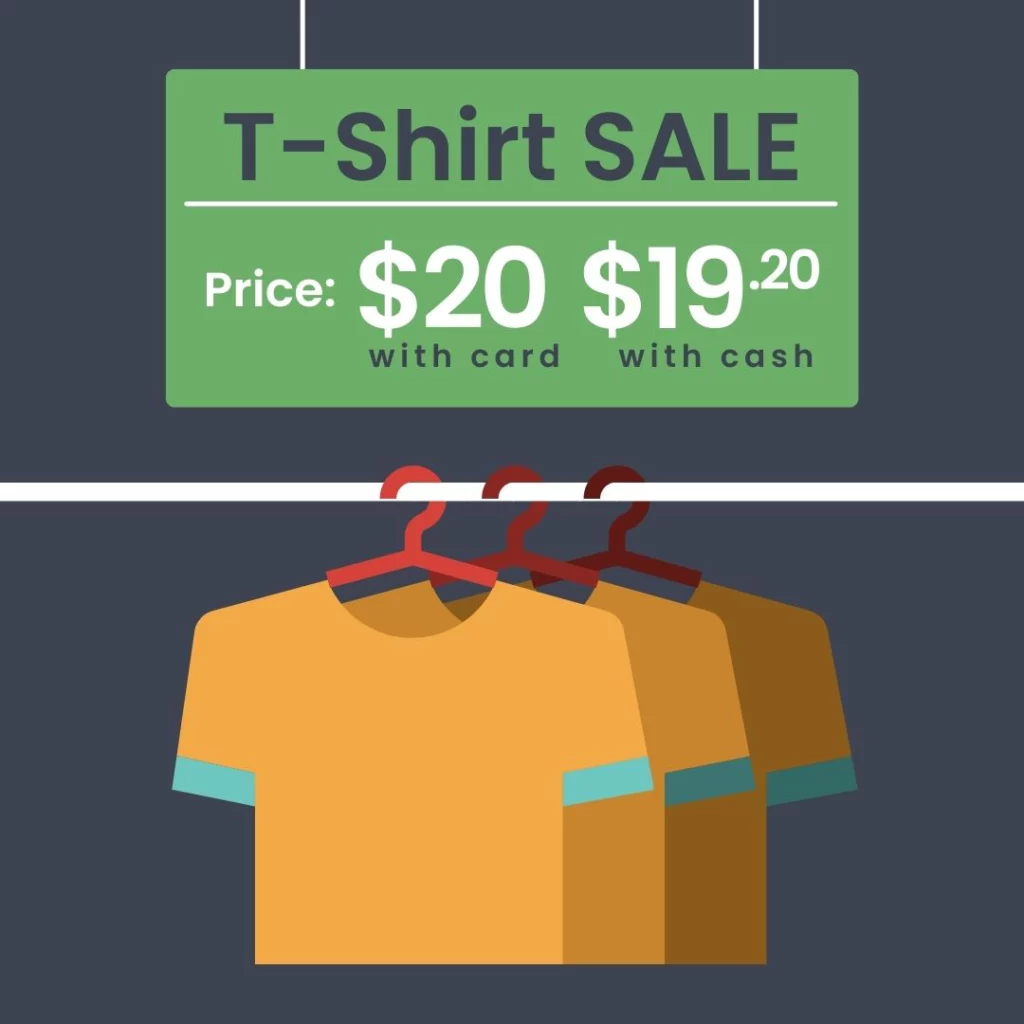An inside look at programs that offer to save you money on merchant services
There’s been plenty of discussion about these topics. It is important to understand cash discounting, dual pricing, and non-cash adjustment programs so that you don’t get taken advantage of by other payment processors. That landscape on saving money on merchant services is changing quickly. Acumen Connections takes pride on providing you with the most up-to-date information on these topics.

No surprise that you’re looking to save on payment processing. In this article we’ll cover:
- The value in payment processing discount programs
- Non-cash adjustment programs
- Cash discounting and dual pricing programs
- Compare/contrast chart of cash discounting and non-cash adjustment
Will that be cash or card?
Consumers get rewarded for using cards. Most noticeably, credit card users get to enjoy perks like miles, cash back, matching programs, points, and even the convenience of buying now and paying later. It’s not just credit card holders. Today, there are even debit cards with cash back options. 21st century debit and credit cards are amazing! Meanwhile, businesses get stuck with the cost of payment processing. On average, businesses face interchange fees that consume 2%, sometimes up to 3.25%, of their sales. There are often other fees on top of that too.

We consulted our in–house payment processing wizard, Andrew Stoffregen, and he said:
“It costs money to accept cards. A lot of businesses are looking for ways to save money on payment processing and card merchant services.”
Many businesses consider services like cash discounting, dual pricing, and non-cash adjustment programs to help save money.
With one of these programs, businesses are able to recoup the costs of merchant services, and customers are still able to buy the items they want. Best of all, customers still have the ability to use cash or card at their favorite brands!
Businesses that use programs like cash discounting pay far less out of pocket for credit card services. They gain the following advantages:
- The ability to save a few cents may encourage regulars to buy with cash. Running fewer credit card transactions can result in saving money on payment processor fees.
- The money businesses recoup from one of these discounting programs covers a sizable chunk of their merchant services fees.
Keep more of the cash you earn!
Let’s take a closer look at these programs and compare them.
What is non-cash adjustment?
A non-cash adjustment plan charges the customer an additional fee when they choose to pay with their credit card. The extra fee added to the total amount due is called the service fee.
How non-cash adjustment works
In simple terms, non-cash adjustment is a system when an extra amount called a service fee is added to the total cost of goods purchased.
All customers pay the sticker price of the item. Credit card users pay the sticker price + a service fee.
What types of payment options does non-cash adjustment impact?
Non-cash adjustment is applicable to credit cards alone. It does not cover debit card transactions.
In cases where a customer pays using cash, check or even a debit card, they are required to pay just the cost of item(s) they’re buying. However, if their choice of payment method is credit card, they’re required to pay a fee in addition to cost of items purchased.
Non-cash adjustment: Real-life example
A customer walks into a store and picks out an assortment of items, totaling $82.32.

When they’re at the checkout counter, the customer can choose to pay with cash and pay $82.32. Or, they can pay with credit card and pay $85.61. That’s $82.32 for the items and a service fee of $3.29.
The exact service fee can be different – it’s usually based on a percentage of the sale. For the purpose of this example, we chose a service fee of 4%.
How it appears on a receipt
A receipt shows the items purchased and their individual prices which are all added up to show the total price. When non-cash adjustment comes to play, it is depicted as a fee that is added to the total price.
Total price of items + Service fee = Total amount paid
Example:
$100 (when paid with cash) = $100
$100 item + 4% CC service fee = $104
The upside is that it makes it easier to see where your funds come from. On the flip side, credit card providers can see when businesses have a non-cash adjustment program in place. That’s why it’s good practice to inform the card companies ahead of time.
Requirements
There are a few requirements businesses must follow when they have a non-cash adjustment programs:
- Must have signage at the door and next to the point of sale. It should say something along these lines: “We apply a service charge of X% on all credit card transactions.”
- Adding a service fee is only applicable to credit cards.
- Your payment processor will work with you to find a service rate that works for you and your customers. However, service fees can’t be over 4%.
- Certain card brands, like Visa or Mastercard, need to be notified in advance.
- Be mindful of regulations or limitations in regard to your industry or location.
Be sure to work with a payment processor that understands the requirements. You’ll want a payment processing partner that sets you up for success with this program. Look for a payment processor that provides free non-cash adjustment signage and support.

Concerns
It is advised to exercise caution when a business partakes in a credit card non-cash adjustment program. They need to adhere to the legalities associated with non-cash adjustment in their state. It’s also important to be aware of customers’ views. In some industries, customers will not notice a small fee. In other, more price-competitive industries, customers will notice a fee.
What is cash discounting and dual pricing?
In simple terms, cash discounting, sometimes referred to as dual pricing, refers to a system where a business rewards customers for making payments using cash.
“So basically, at the point of sale, there is a difference between cash price and credit price. This is why the program can also be referred to as ‘dual pricing’,” Andrew explains.

Picture this: You have cash discounts in place. Two customers walk into your store on the same day. They purchase the same item. One uses their debit card to buy an item for $13. Meanwhile, the other person looks at your sign and decides to take out cash instead for the same item. Instead, they only pay $12.50 for the same item.
The person that uses cash gets a discount.
Isn’t this just non-cash adjustment?
No. Cash discounting isn’t the same as non-cash adjustment.
Non-cash adjustment is when a business charges an additional fee when customers use credit cards to pay for items or services. Cash discounting is when businesses provide a discount for customers using cash.
How do dual pricing and cash discounting programs work?
For starters, a cash discounting program offsets the payment processing fees associated with card payments. It’s applicable to both credit cards and debit cards.
Customers that pay with cash will pay the same amount they did last week. The difference is that your customers paying with credit cards are paying the new (slightly higher) sticker prices.
Andrew sheds a little more light on the process, “Let us assume that your business sells clothing and accessories. Your shirts were $19.20 last week. You start a cash discounting, or dual pricing, program and raise the price of your shirts to $20… A customer paying with a card will pay $20 while another customer who is paying cash will walk away with the shirt after paying $19.20.”
Those who pay using cash will pay less than someone using a bank card would.
How would a business set up cash discounting?
If a business wants to set up cash discounting, they will need to work with a merchant services processor that offers this service.
Payment processor Acumen Connections provides a dual pricing program to merchants. The sooner you switch, the more you can save!
You’ll need to display signage around your store about your new program. Luckily though, when you work with Acumen Connections, we provide you with the signage you need.
Last but not least, you’ll need a compatible device type.
In-store requirements
It is necessary to have signage around the store and at the checkout counter. It could be as simple as saying, “Cash discount offered”. Being clear and concise can save one a lot of trouble and confusion.
There are a few regulations your business would have to follow with a cash discounting program in place.
- Inform your customers about your dual pricing program and explain that there is a discount for using cash. The program only works if customers are informed.
- Provide signage in your store to reflect this message as well. You’ll need to place visible signage at your front door and next to your register or POS.
- You will need a card reader or POS device that is compatible with cash discounting. The Dejavoo Z11 is an example of a compatible device.
Cash discounting equation
There’s no complicated equation to determine a price difference for cash discounting. Most providers set a cash discount at 4%. This means that customers that use cash save about 4% on their purchase.
How would you calculate that? Well, you can use a tool like DuoPriceList to help with that math. But for understanding sake, just know that you could follow the equation below to see what your cash prices would look like.
Product price x .96 = Price when using cash.
Try it out yourself. Put in the sticker price of one of your most popular items or service.
What is the price of your most popular item or service?
Customers paying with card will pay:
Customers paying with cash will pay:
How it appears on a receipt
This is the cool part! The receipt lists the price as the amount paid and that’s it! There’s no service fee or any other additional charge. This makes accounting easier.
In simple terms,
Item = $96 if you pay with cash
Item = $100 if you pay with card
This is very convenient for accounting purposes. In addition, credit card companies don’t notice or mind dual pricing as much.
Can all businesses use cash discounting?
Cash discounting is not something that can be universally applied to all businesses across industries. What works for some may not work for others. Not all businesses can or should use cash discounting. Ultimately, you know your customers best. Is a cash discounting program something they’d mind?
Comparing non-cash adjustment and cash discounting
| Non-cash adjustment | Cash discount |
| (Sometimes called dual pricing) | |
| Customers paying with credit card pay an additional service fee. That service fee does not apply to those using cash, check, or debit card. | Customers paying with cash or check pay less than those paying with debit or credit card. |
| There are more local-level requirements for it depending on your state. | It’s important to note that this program is different from a non-cash adjustment program. There’s no additional fee. |
| The receipt lists the item price + service fee = what was paid. Some credit card companies quickly become aware. $100 (when paid with cash) = $100 $100 item + 4% CC service fee = $104 when paid with card | The receipt lists the price as the amount paid. So credit card companies don’t mind. Item = $96 if you pay with cash Item = $100 if you pay with card |
Conclusion
We hope this has helped shed light on your merchant service discount options. To learn more, about these programs as a whole, you can give our team a call. If you’d like to learn more about the particular services we provide, check out our merchant services discount page (coming soon).
Anna Reeve, MBA


